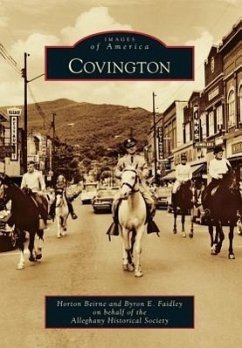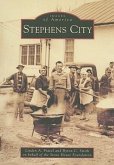Covington grew from one of Col. George Washingtons frontier forts, known as Fort Young, and due to the location of several early structures was known as Mouth of the Dunlap in the 1700s. Located on the Midland Trail and the proposed route for the Chesapeake & Ohio Railway, Covington was able to expand. The Civil War temporarily halted this progress and sent many of Covingtons native sons to fight on both sides during the conflict. After the war, the growing iron industry revived the community. In 1899, the West Virginia Pulp and Paper Company located a mill at the confluence of the Jackson River and Dunlap Creek, which continues to support the city of Covington today. The dawn of the 20th century found Covington booming and expanding so much that two new railway passenger stations had to be built within an 18-year period.
Hinweis: Dieser Artikel kann nur an eine deutsche Lieferadresse ausgeliefert werden.
Hinweis: Dieser Artikel kann nur an eine deutsche Lieferadresse ausgeliefert werden.








